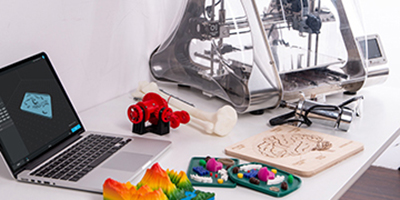
3D Printing
3D Printing
An ongoing challenge for insurance is to protect against personal and commercial sources of loss in a rapidly changing world. With the passage of time and the influence of technology, new types of risks arise. One such risk is called additive manufacturing or, more commonly, 3D printing. It is a process that was built from 2D printing technology. It allows the production of objects by creating individual layers and adding them in increments. The layers of filament that are individually created by 3D printers are deposited, layer-by-layer, on a print bed that lowers an object until it is completed.
While this may appear to be new technology, the concept and basis for this type of production has been around since the 1980s. Today, there are several 3D printing methods:
- Digital Beam Melting
- Digital Light Processing (DLP)
- Fused Deposition Modeling (FDM)
- Laminated Object Manufacturing (LOM)
- Selective Laser Melting (SLM)
- Selective Laser Sintering (SLS)
- Stereolithography (SLA)
While all of the above methods are in use, the most popular method is still SLA (the earliest means of 3D printing).
This method of manufacturing is exploding both in commercial and home use. Commercial use includes gun making, fabricating prosthetics, machine parts, fabrics, rigid looms, toy models, on-demand replacement parts, instruments, and many other examples. Home use is at a lower stage of growth but is primed to rapid growth once 3D printers become more affordable.
A genuine concern is that there is no significant regulation that helps mitigate risks. Neither standard commercial nor personal liability policies have introduced language that addresses 3D printing risks. Of course, that won’t stop litigation when 3D printing losses occur.
Problems will soon arise for various reasons. Liability policies address losses according to parties responsible for such losses. 3D printing losses may often be confusing regarding assigning blame. Imagine a person is hurt while using a product that was repaired with a 3D printed replacement part. The small businessperson who supplied the part used downloaded printing instructions provided by a website that copied the design of the original part manufacturer. Which party is responsible for the loss? In this case, even the printer maker could be at fault.
The fact is more risks of loss involving 3D printing are created each day. Insurance professionals must start collecting information and gaining greater awareness to help spur policy language changes and, perhaps, new policy forms to meet these risks. Connect with your Hertvik Insurance Group to ensure your 3D printing exposures are correctly covered.
